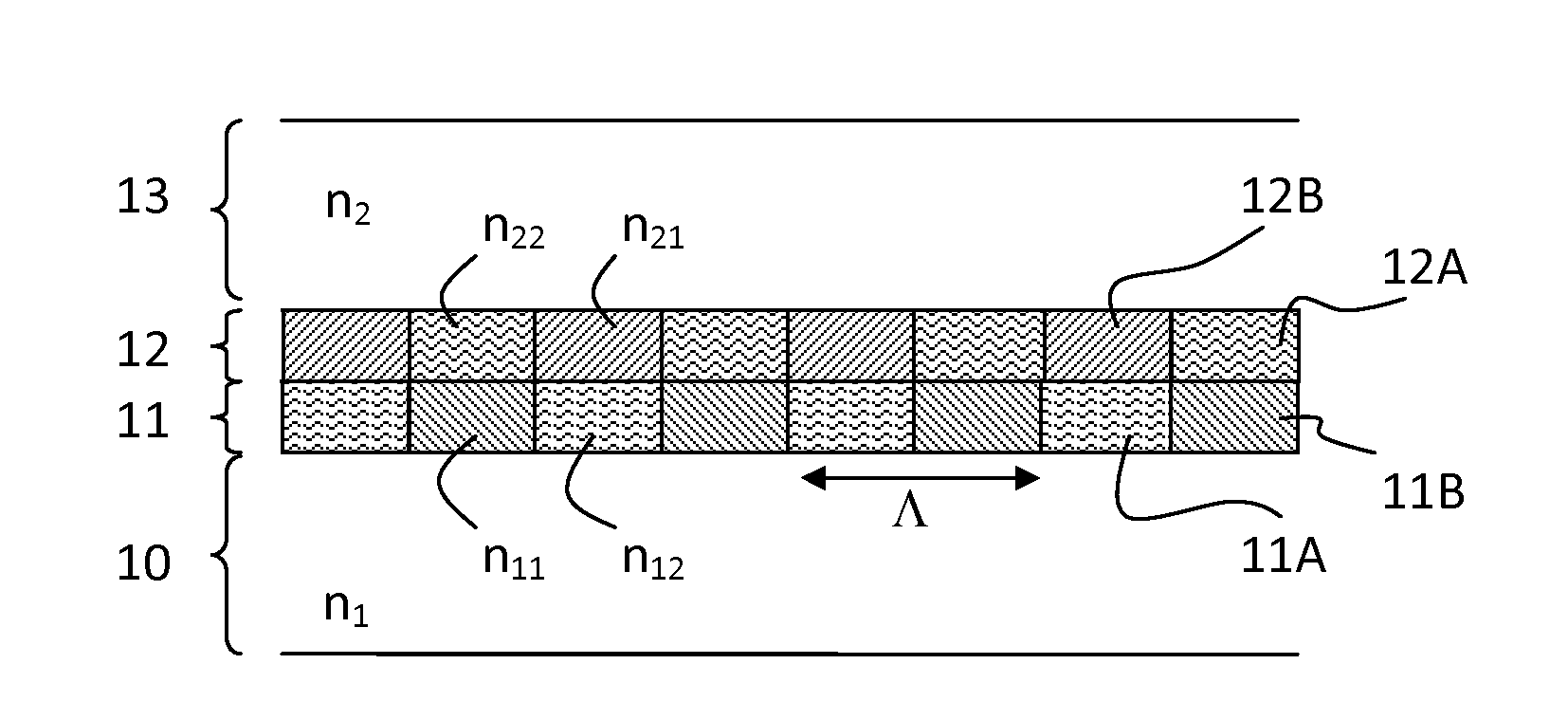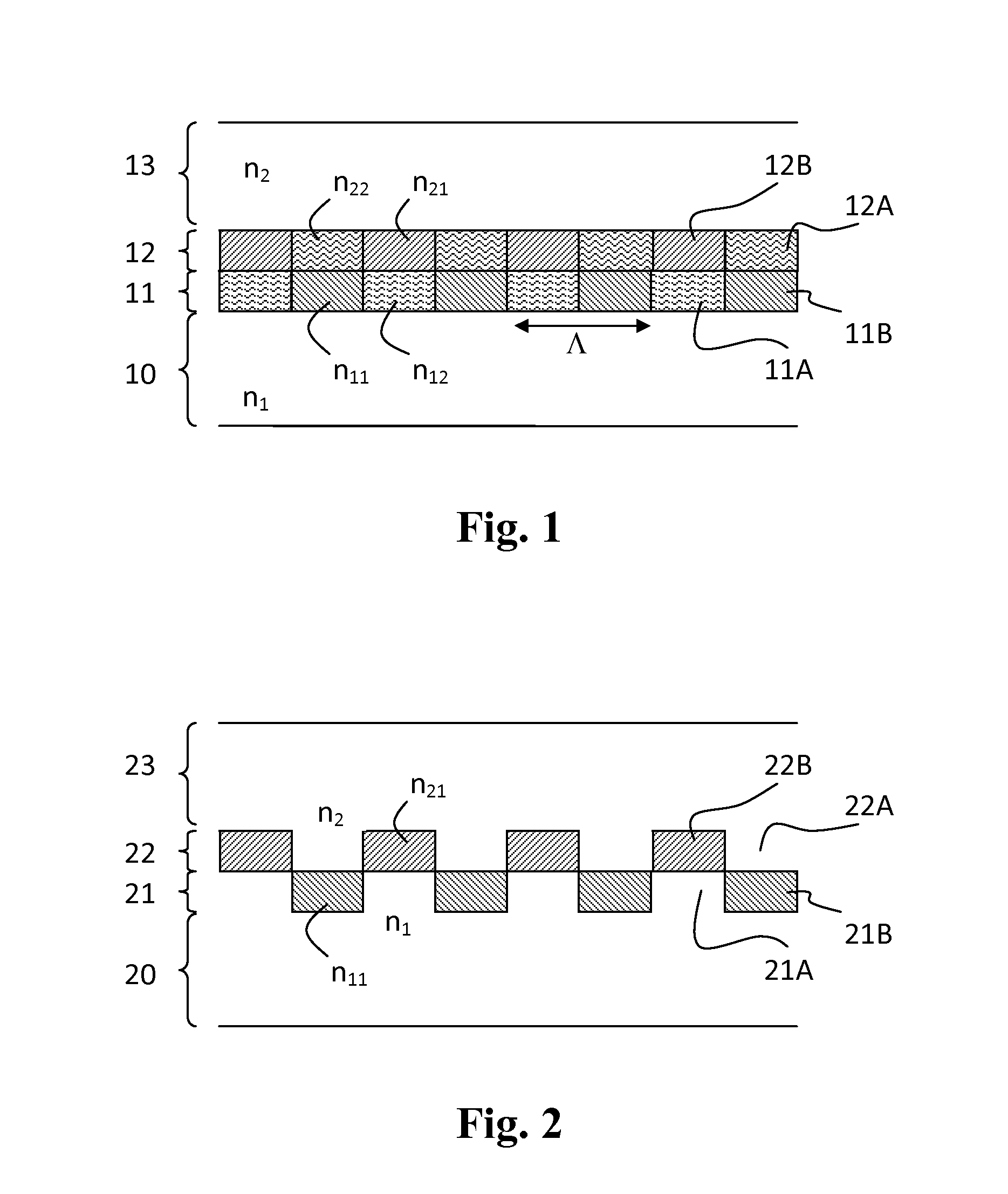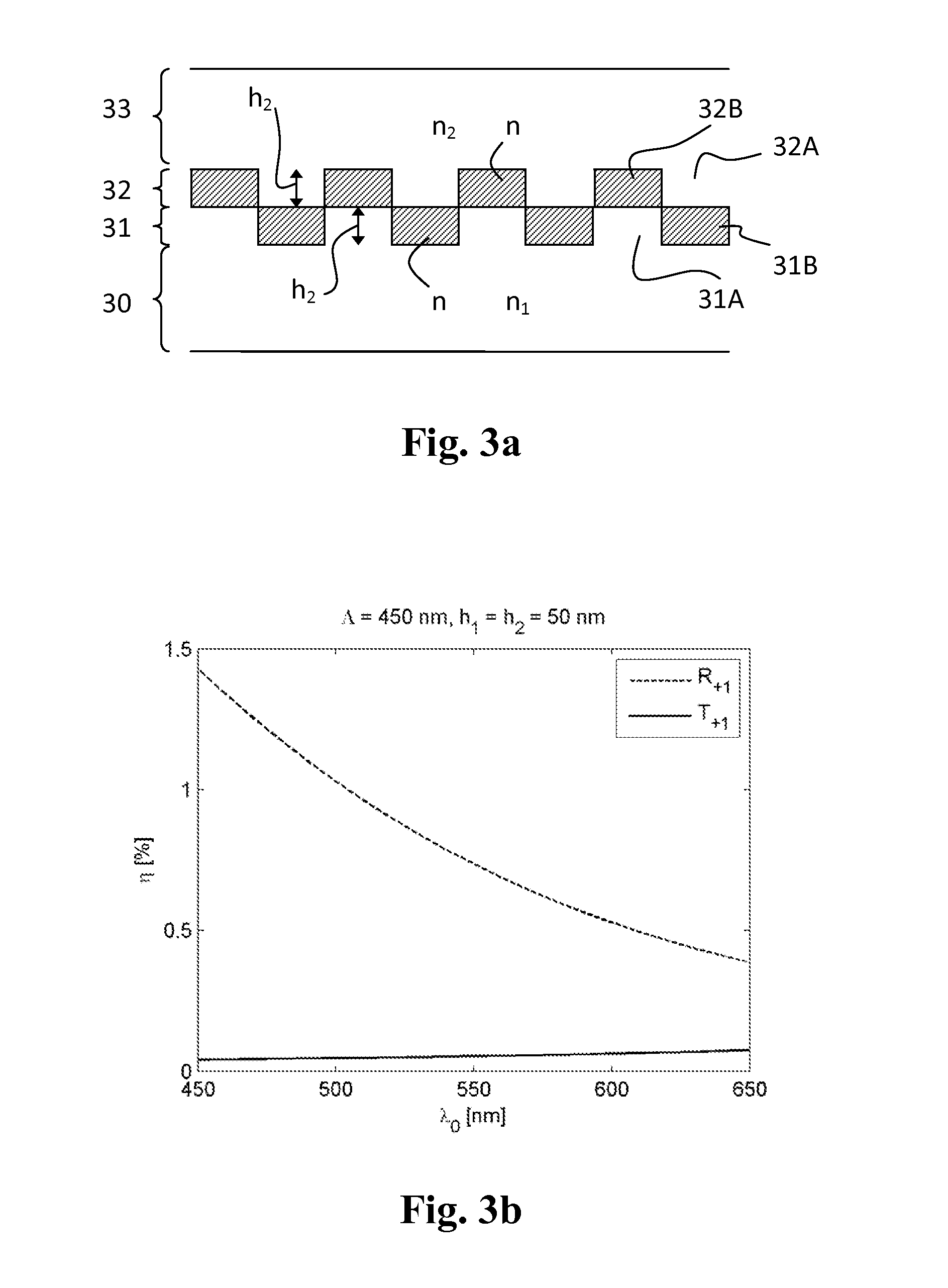Optical device with diffractive grating
a technology of optical devices and diffractive gratings, applied in the field of optical devices, can solve the problems of inability to achieve the desired effect, inability to transmit diffraction orders, and inability to achieve transmission, etc., to achieve the effect of optimizing the suppression of the rainbow
- Summary
- Abstract
- Description
- Claims
- Application Information
AI Technical Summary
Benefits of technology
Problems solved by technology
Method used
Image
Examples
Embodiment Construction
[0048]FIG. 1 illustrates a general structure of the two-layer grating according to the invention. The grating comprises a first grating layer 11 and a second grating layer 12. The both grating layers have the same grating period (Λ) and are binary. The first grating layer is composed of a periodic pattern of alternating material zones 11A and 11B having different refractive indices n11 and n12, respectively. Likewise, the second grating layer is composed of a periodic pattern of alternating material zones 12A and 12B having different refractive indices n21 and n22, respectively. On the first side of the two-layer grating there is provided a first optically transparent material layer 10 having a refractive index n1 and on the second side of the grating there is provided a second optically transparent material layer 13 having a refractive index n2. The layers 10, 13 on one or both sides of the grating may comprise also air (or vacuum) layers, i.e. lack any solid material.
[0049]A simpl...
PUM
 Login to View More
Login to View More Abstract
Description
Claims
Application Information
 Login to View More
Login to View More - R&D
- Intellectual Property
- Life Sciences
- Materials
- Tech Scout
- Unparalleled Data Quality
- Higher Quality Content
- 60% Fewer Hallucinations
Browse by: Latest US Patents, China's latest patents, Technical Efficacy Thesaurus, Application Domain, Technology Topic, Popular Technical Reports.
© 2025 PatSnap. All rights reserved.Legal|Privacy policy|Modern Slavery Act Transparency Statement|Sitemap|About US| Contact US: help@patsnap.com



